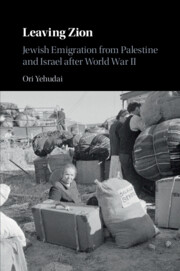Book contents
3 - “An International Scandal”
Published online by Cambridge University Press: 24 April 2020
Summary
As the 1950s progressed, emigration acquired a new international dimension, affecting Israel’s relations with other countries and harming the ability of Israelis to travel freely in Europe.
From 1951 to 1953, emigration from Israel amounted to more than double the number in the preceding three years. Many of the emigrants intended to go to Canada, but due to Canadian procedures, many migrants got stranded in Europe en route from Israel to Canada. The complications reached their apogee in the Foehrenwald DP camp in Bavaria, which was closed only in 1957 and thus became a magnet for Israeli remigrants seeking sanctuary from the troubles they had encountered in Europe. The illicit movement into Foehrenwald was an impediment to the German efforts to close the camp and terminate the Jewish refugee problem in Germany. It also led to the ironic situation whereby Israeli remigrants were threatened with deportation from Germany to Israel. Their status developed into a diplomatic issue between the Israeli and West German governments. Other European governments also imposed restrictions on immigration from Israel.
Israeli emigration now drew negative international attention from government officials, relief officers, and Jewish community leaders, tuning it into a source of political embarrassment for Israel.
Keywords
- Type
- Chapter
- Information
- Leaving ZionJewish Emigration from Palestine and Israel after World War II, pp. 98 - 137Publisher: Cambridge University PressPrint publication year: 2020



